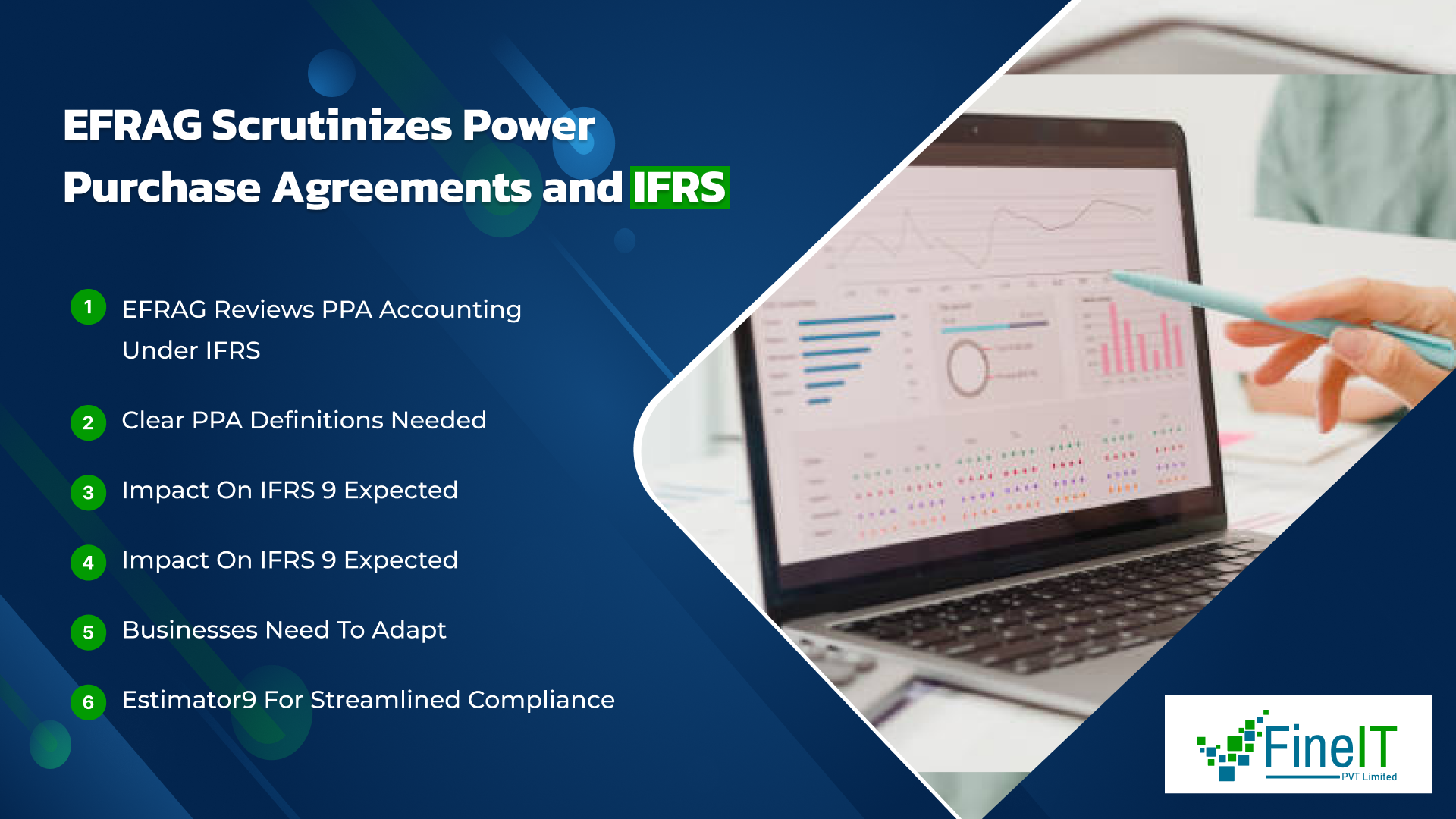The European Union’s (EU) Green Deal pushes for a significant shift towards renewable energy sources. This transition has a direct impact on the financial reporting practices of companies involved in the renewable energy sector. A key aspect of this is Power Purchase Agreements (PPAs), long-term contracts between electricity producers (renewable energy companies) and consumers (typically large corporations or utilities).
EFRAG Takes Center Stage
The European Financial Reporting Group (EFRAG) plays a crucial role in ensuring the smooth adoption of International Financial Reporting Standards (IFRS) within the European Union. Recently, EFRAG issued a final comment letter (FCL) on the International Accounting Standards Board’s (IASB) Exposure Draft (ED) titled “Contracts for Renewable Electricity.“
This ED aims to provide clarification on how PPAs should be accounted for under IFRS. EFRAG’s FCL offers valuable insights and suggests improvements to the proposed amendments. Here are some key points to understand:
- Scope and Clarity: EFRAG emphasizes the need for a clear definition of the types of contracts falling under the scope of the ED. This ensures consistent application of the standard and avoids confusion for companies entering into diverse PPA arrangements.
- Own-Use Assessment: EFRAG recommends revisiting the proposed disclosure requirements around “own-use” scenarios where a company purchases electricity from a PPA but then uses a portion internally.
- Hedge Accounting Considerations: The FCL highlights the importance of addressing hedge accounting implications for PPAs. This ensures proper recognition and measurement of financial instruments associated with these contracts.
IFRS 9 and its Interplay with PPAs
The proposed IFRS standard on PPAs will likely have implications for the application of IFRS 9, which governs the classification, measurement, and impairment of financial instruments. As PPAs often involve financial components, such as fixed or variable payments, understanding the interaction between the two standards is crucial.
Key considerations include:
- Classification: Determining whether a PPA or components of it should be classified as a financial asset or a liability.
- Measurement: Applying appropriate measurement principles, such as amortized cost or fair value, to financial components of PPAs.
- Impairment: Assessing the credit risk associated with counterparties and applying the expected credit loss (ECL) model to estimate potential losses.
Streamlining IFRS Compliance
Navigating the complexities of IFRS, especially when dealing with new standards like the one on PPAs, can be challenging. To streamline the process, financial institutions can leverage technological solutions. Estimator9 is a fully automated IFRS 9 compliance software designed to simplify the calculation of expected credit losses (ECL). While it primarily focuses on IFRS 9, it can also be a valuable tool for managing the financial aspects of PPAs.
Conclusion
The intersection of renewable energy and accounting presents a dynamic landscape for businesses. The EFRAG’s work on PPAs, coupled with the ongoing evolution of IFRS 9, underscores the need for careful consideration and robust financial reporting practices. By staying informed and leveraging appropriate tools, companies can effectively manage the challenges and opportunities presented by this evolving environment.



